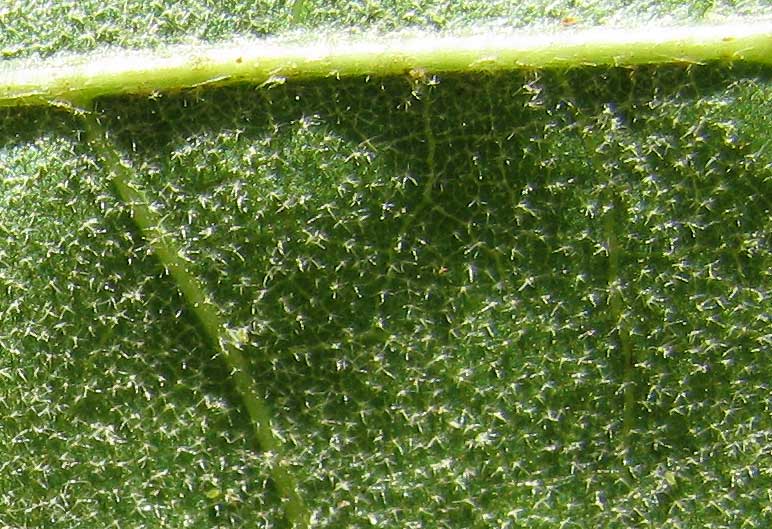Excerpts from Jim Conrad's
Naturalist Newsletter
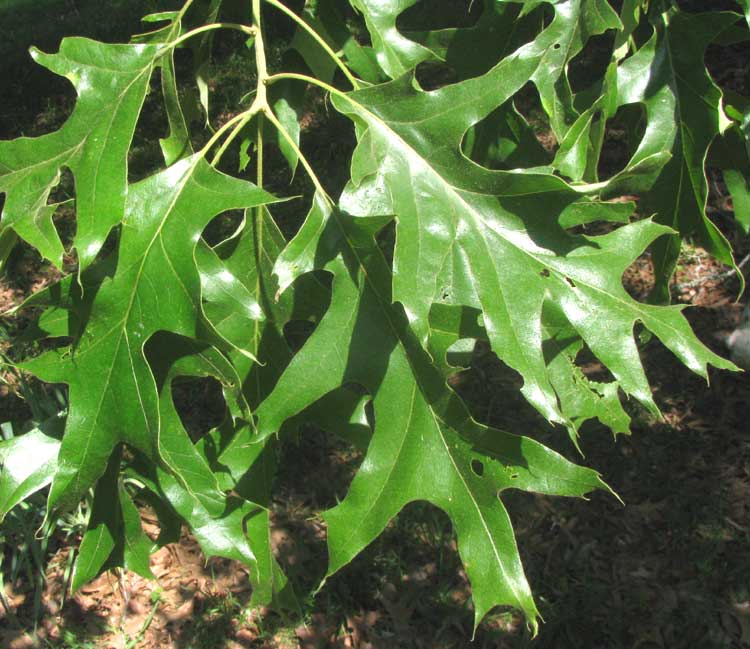
from the the April 15, 2012 Newsletter, issued from the forest near Natchez, Mississippi; elevation ~400ft (120m), ~N31.47°, ~W91.29°:
CHERRYBARK OAKS FLOWERING
The leaves of a big Cherrybark Oak, QUERCUS PAGODA, are shown above. The tree occupies the center of the view from my trailer and each moring it impresses me when I look up from my breakfast campfires. It seems to channel to me some of its potency and dignity.
Interestingly, my old (1979) Golden Press Trees of North America doesn't even include Cherrybark Oaks, which are common across the US Deep South and up the Mississippi River drainage to western Kentucky and southern Indiana. Earlier it was considered a variety of the Southern Red Oak, and many field guides just ignored it. But, as the online Flora of North America says, "it is quite distinctive, however, both morphologically and ecologically." Southern Red Oak's leaf bases, for instance, usually are rounded or U-shaped, and their leaves' terminal lobes are longer than the side ones, while Cherrybark Oak leaf bases are flat to V-shaped, and leaf terminal lobes rarely are longer than the side ones.
Catkins of stacked male flowers already have appeared and fallen from our Cherrybark, but the female flowers -- the future acorns -- remain as tiny future acorns with slender styles still attached, as shown below:
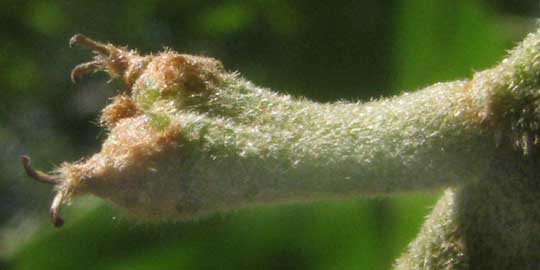 .
.
Last year's acorn cups thickly litter the ground below the big tree, though the nuts themselves are hard to find, having been eaten with relish by local wildlife. You can see some smallish cups and a nut below:

The big Cherrybark Oak's Cherry-bark-like bark is seen below:
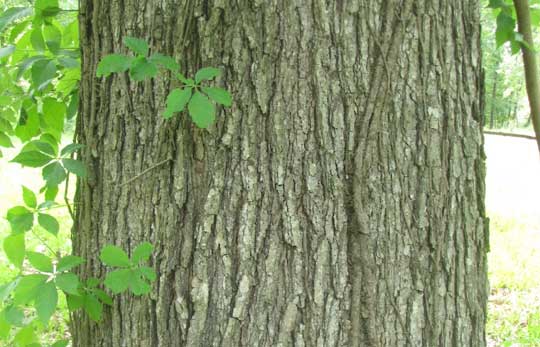
from the June 9, 2008 Newsletter, issued from the forest near Natchez, Mississippi; elevation ~400ft (120m), ~N31.47°, ~W91.29°:
SILVERINESS IN CHERRYBARK OAK LEAVES
Late afternoon sunlight slanting in from the west very prettily lights up trees directly before my porch. One feature of the view likely to catch anyone's attention is that some trees are emerald green while others are silvery green, as you can see below:
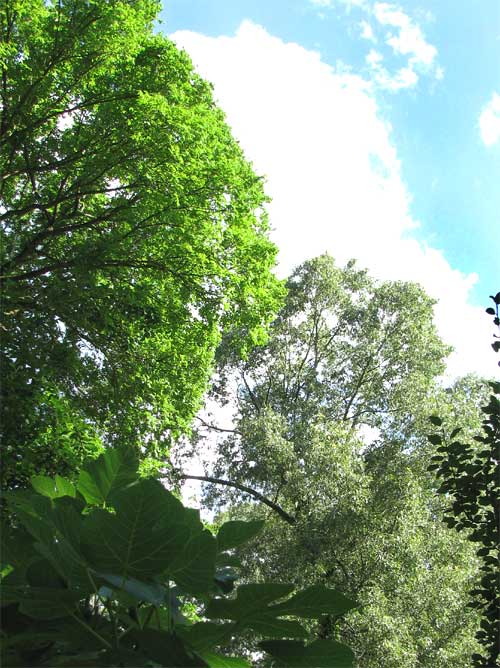
That picture looks like I've used PhotoShop to accentuate the green tree's greenness, but that's just the effect of late-afternoon sunlight. The green tree on the left is a big American Elm miraculously still unaffected by Dutch Elm Disease. The silvery-leafed tree at the right is a Cherrybark Oak, QUERCUS PAGODA.
I got curious about what was behind the Cherrybark's silveriness so I went and looked. The silveriness appears to be caused by abundant, minute, silvery hairs of a special kind mantling the leaves. Books refer to these special hairs, so thick on the leaves' undersurfaces that the undersurfaces have a velvety feeling, as "stellate." "Stellate" means "star-like," and the Cherrybark's hairs are star-like because they often consist of several sharp hairs arising from a single point on the leaf-blade surface, like the rays of light that supposedly emanate from stars.
The Cherrybark Oak's stellate hairs are so tiny that with naked eyes they're hardly visible. Therefore, I decided to put the new camera to a test. Could this little camera bought off the shelf at Wal-Mart make out those stellate hairs? The answer is provided below. The yellowish ridge at the photo's top is a Cherrybark Oak leaf's midrib.
